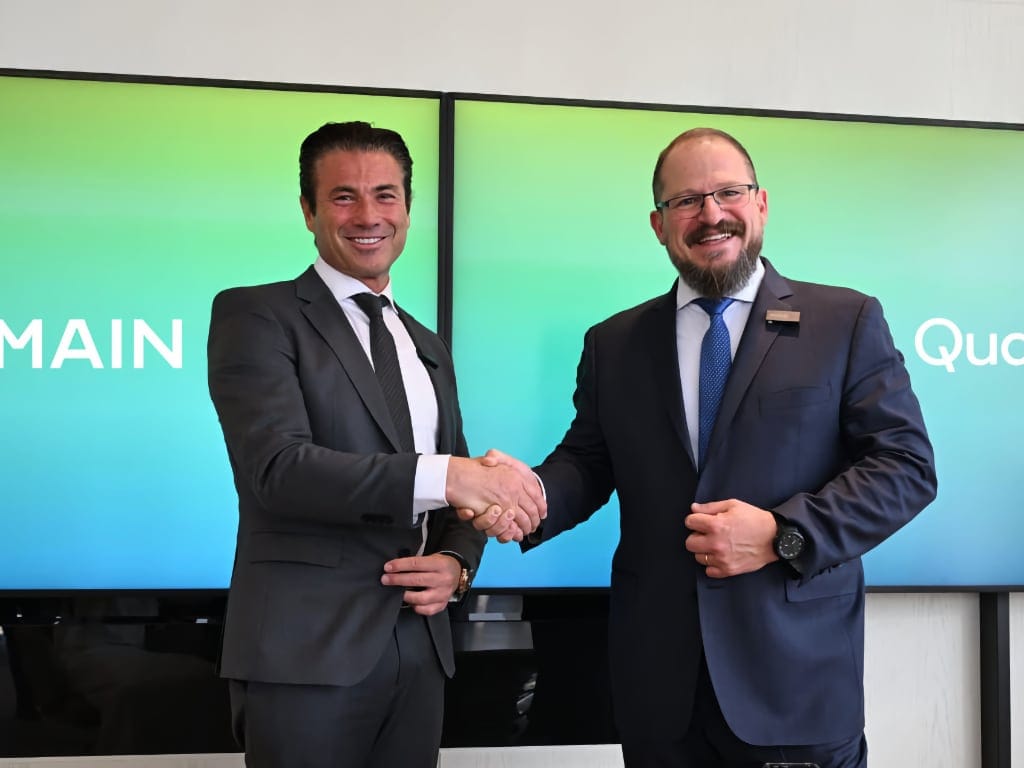- HUMAIN and Qualcomm will deploy AI infrastructure in Saudi Arabia, announced 28 Oct 2025 ahead of FII.
- Target: 200MW starting in 2026 using Qualcomm AI200 and AI250 rack solutions for global inference services.
- Positioning: a “world’s first” fully optimised edge-to-cloud hybrid AI service.
- HUMAIN’s Saudi-built ALLaM models will integrate with Qualcomm’s platforms.
- Qualcomm cites rack-scale performance and high memory capacity aimed at lower TCO for generative AI inference.
HUMAIN and Qualcomm have teamed up to build advanced AI infrastructure in Saudi Arabia. The plan, revealed in Riyadh on 28 October 2025 ahead of FII, aims to offer global AI inference with an edge-to-cloud setup the companies call a first of its kind. The rollout targets 200 megawatts starting in 2026, based on Qualcomm’s AI200 and AI250 rack solutions.
For UAE readers, this sits next door and fits the wider regional push into AI compute and sovereign services. For more regional context, see our AI coverage, our look at Qualcomm’s industrial AI kit in Dubai, and the e& + Intel AI Centre in Dubai.
What HUMAIN and Qualcomm are building
The collaboration is meant to make Saudi Arabia a global AI hub, providing inference services through an edge-to-cloud hybrid. HUMAIN brings regional infrastructure and a full AI stack; Qualcomm brings silicon and platforms.
- Announced 28 Oct 2025 in Riyadh ahead of FII
- Global AI inference, edge to cloud
- HUMAIN + Qualcomm combine data-centre ops and AI platforms
- Blueprint model for national AI builds
The companies pitch this as the “world’s first fully optimised” hybrid that runs from the edge into the cloud. In plain English: workloads can sit closer to users when latency or data control matters, and scale into the cloud for peaks. The promise is a cleaner path to production AI, not just pilots.
The scale: 200MW from 2026 on AI200/AI250 racks
The target is 200 megawatts of capacity from 2026 using Qualcomm AI200 and AI250 racks. That’s a statement build, aimed at high-throughput inference.
- 200MW phased from 2026
- AI200 and AI250 rack solutions
- Designed for high performance per total cost of ownership
- For enterprises and government in KSA and global clients
In practice, this means more compute for running models rather than training them, which is where most real-world AI services live after launch. If the capacity lands on schedule, it should support both local Saudi demand and exportable inference for regional users, including UAE-based firms operating across the GCC.
The stack: ALLaM models on Qualcomm platforms
HUMAIN will integrate its Saudi-developed ALLaM models with Qualcomm’s platforms. The two firms also plan customer-specific solutions for enterprise and government workloads.
- ALLaM multimodal Arabic LLM mentioned as part of HUMAIN’s model line-up
- Qualcomm platforms touted for inference efficiency and memory capacity
- Joint solutions tailored to sector needs
For buyers, the draw is clear: keep latency low, keep costs predictable, and adapt the stack to regulated sectors. The memory-rich design of AI200/AI250 aims at large context windows and token throughput, which matter for modern generative workloads.
What leaders said
The CEOs didn’t waste words. HUMAIN’s Tareq Amin said the tie-up blends HUMAIN’s full-stack chops with Qualcomm’s semiconductor leadership to shape the Kingdom’s AI foundation. Qualcomm’s Cristiano Amon said the build helps accelerate Saudi’s hub ambitions while empowering organisations across the region and globally.
- HUMAIN: full AI stack + regional execution
- Qualcomm: inference-led data centres and ecosystem build-out
- Shared aim: make Saudi a leading AI node
The quotes track with the broader positioning: infrastructure first, services next. For more on Qualcomm’s recent regional push, see our coverage from GITEX Dubai.
Why it matters for the GCC and UAE
Saudi’s move aligns with the Gulf’s race to secure local AI compute and know-how. It also pairs neatly with UAE efforts to stand up sovereign inference and local manufacturing. If you’re buying in the UAE, expect more choice in where workloads run and clearer SLAs across borders.
- Regional capacity could reduce latency for GCC users
- Hybrid architectures offer data-residency options
- More vendor choice for inference beyond “train-only” stacks
Related reads on UAE builds: Kerno + Intel server manufacturing in Dubai
What exactly was announced and when?
A collaboration to deploy AI infrastructure in Saudi Arabia, revealed in Riyadh on 28 October 2025 ahead of FII.
What’s “edge-to-cloud hybrid” in this context?
A service design that runs AI inference close to the data source when needed and scales up in the cloud. The release calls it the “world’s first fully optimised” version of this model.
How much capacity and when does it start?
HUMAIN targets 200MW starting in 2026 using Qualcomm AI200 and AI250 rack solutions.
Which models and platforms are involved?
HUMAIN’s Saudi-developed ALLaM models will integrate with Qualcomm’s AI platforms.
Who is HUMAIN?
A PIF-backed AI company offering a full-stack approach spanning next-gen data centres, infrastructure, models and solutions.
Subscribe to our newsletter to get the latest updates and news







